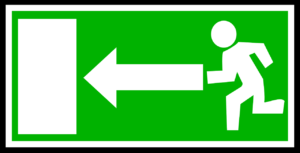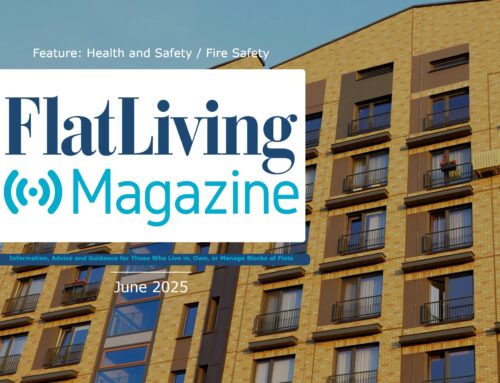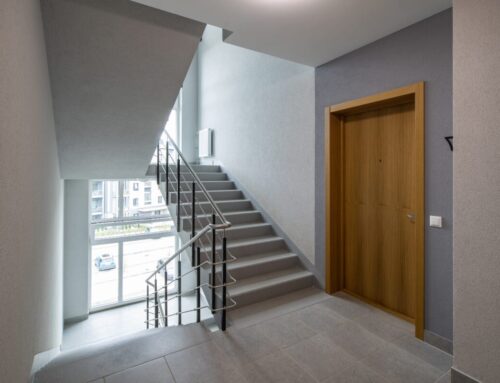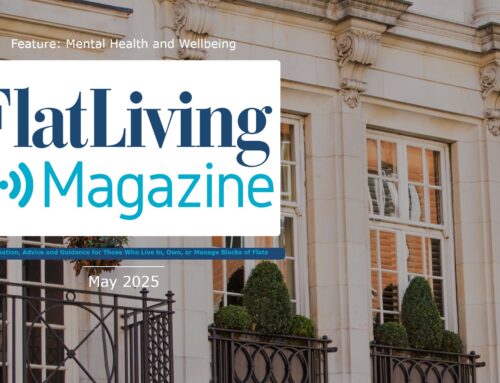What health and safety measures apply to my block of flats?
Health and safety measures are of paramount importance in any private or public setting. Mistakes can – and do – happen. Belinda Thorpe, Managing Director of Residentsline, discusses what you need to know.
In any property designed for numerous people, whether it may be an office block or shopping centre, health and safety measures must be taken seriously. More people tend to mean more room for error, and one unchecked wire, overloaded extension cord or roof leak can easily lead to disaster.
This is especially true in a block of flats, as these residential properties are homes to dozens of people. As a landlord or director of a Residents’ Management Company for your block, it’s your job to keep your residents safe.
What are the main health and safety measures for blocks of flats?
While there are numerous health and safety measures to keep in mind for flats, here are the main five which you should be aware of.

Fire safety
Fire Risk assessments are obligatory for every block of flats. It is the duty of the landlord managing the block of flats to ensure these assessments take place. They apply to the communal areas of the block, such as the foyer, reception, stairs and corridors – not the individual flats.
Fire Officers are permitted to enter the building at to check whether these assessments have been completed and to advise on how to make fire safety precautions better through issuing fire safety precautions. Furthermore, failure to comply with these regulations may lead to prosecution in court.
Communal areas risk assessments
Ensuring your block has had a risk assessment is a legal obligation. These assessments should be completed on an annual basis at the very least. Similarly to fire risk assessments, these risk assessments must be made for the communal areas of your block. This includes external parts of the building as well as internal, such as the roof, gardens, grounds, meter cupboards, structure and lift motor rooms.
This is a legal requirement under the Management of Health and Safety at Work Regulations 1999 and, whilst many may argue that blocks of flats do not count as a place of work, the majority of blocks are visited frequently by gardeners, cleaners, repair contractors or managing agents. Therefore, a risk assessment must be made to ensure the grounds are safe for these employees.
Likewise, if there are no employees working at the block, there is no legal requirement for this type of risk assessment to take place. However, it is always good practice to do so in case of an accident occurring; if you did not have records of a risk assessment being carried out you would be far more likely to be prosecuted in court or sued for negligence.

Electrical equipment safety
It is the duty of the landlord to ensure that any electrical equipment they supply to employees, for example a cleaner or contractor, is properly maintained and tested regularly.
This assessment takes place as a visual inspection and a more formal test of the equipment and should be carried out at the intervals recommended by the Electrical Safety Council (ESC).
Legionnaire’s Disease
Legionnaire’s disease is a real threat in blocks of flats and is caused by the Legionella bacterium commonly found in water systems. Once again, it is the responsibility of the landlord to control the risks of Legionella in any pipes, tanks and taps in common parts. Cold-water tanks, taps and showers within lessees’ flats are the responsibility of the lessees, unless the lease states otherwise.
A risk assessment should be carried out by an expert and, if further action is required, a written plan of action should be produced to reduce the risks. An annual review of the risk assessment should also be made.
Working at height
It is important for landlords to remember that working at heights should only be allowed is it is completely necessary. If there is an alternative, safer way to complete the job, then working at height should be avoided. However, there are numerous jobs which require height work, such as roof reparations, changing light bulbs, cleaning, testing smoke detectors and clearing gutters.
The equipment for working at heights, such as ladders or steps, are sometimes provided by the landlord. If this is the case, the equipment should be regularly checked to ensure it is safe to use. Likewise, the equipment should have safety notices to ensure safety precautions are being adhered to when they are used.
Whilst many may think ‘working at height’ only applies to roof repairs, it actually refers to any height which a person could be injured by if they fell from it. This includes work taking place below ground level.
Risk assessments must be made if employees such as window cleaners or other contractors visit a block of flats. Part of this obligation will fall on the contractor completing the work, although it is also part of the landlord’s responsibility to ensure the safety of employees.




Leave A Comment